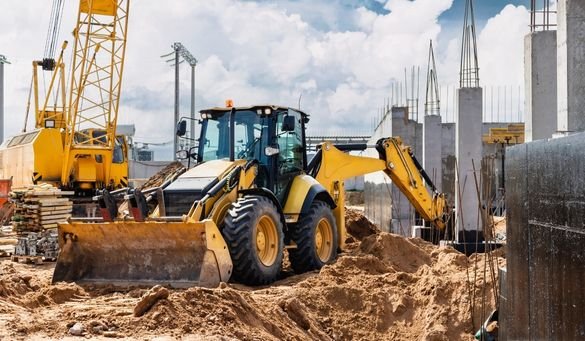Scissor Lift Rental: Safe and Efficient Lifting Solutions
Scissor Lift Rental: Safe and Efficient Lifting Solutions
Blog Article
Optimize Your Spending Plan by Recognizing the Expenses Related To Building Equipment Services
Comprehending the complete scope of expenses connected with construction tools leasings is critical for maximizing your spending plan. What methods can be utilized to properly take care of these prices and make certain a much more efficient rental experience?
Introduction of Rental Expenses
When thinking about building and construction equipment leasings, comprehending the linked costs is extremely important for effective budgeting and project preparation. Rental prices can vary substantially based upon numerous factors, including equipment type, period of leasing, and location. The initial rental cost frequently reflects the devices's market demand and its connected operational capabilities, affecting the overall cost.
Along with the base rental rate, ancillary costs might emerge, such as transport costs, fuel additional charges, and upkeep charges. It is vital to account for these added expenditures to properly examine the complete expense of renting tools. Moreover, the rental duration can impact pricing; longer leasings may get approved for discounted rates, while temporary leasings may incur higher day-to-day fees.

Break Down of Rental Prices
A detailed understanding of rental prices is crucial for service providers and job managers intending to optimize their budget plans. Rental prices for construction tools commonly are composed of a number of components, including base prices, time-based costs, and use costs.
Base prices are the core charges connected with the service of the tools, frequently established by the type and dimension of the equipment. These prices can differ considerably, affected by elements such as equipment demand, accessibility, and regional market patterns. Time-based costs, which may be daily, weekly, or monthly, offer to suit different task timelines and rental periods.
In addition, rental prices might consist of use costs, which are appropriate when devices is made use of past a specified threshold, making certain that the rental business can account for damage. Seasonal demand variations can additionally influence rental rates, with peak building and construction seasons commonly regulating higher costs.
Furthermore, understanding the rental business's plans pertaining to upkeep and insurance coverage can give further insight into the total price framework. By examining these elements, specialists can make informed decisions, making sure the selection of rental devices lines up with both task requirements and budget restrictions.
Added Charges to Take Into Consideration
Recognizing the intricacies of additional fees is vital for specialists to manage their general leasing expenses properly. Beyond the standard rental rates, various supplementary costs can significantly influence the overall expense of tools rental. These charges usually include distribution and pickup costs, which can differ based on distance and logistics included in moving the equipment to and from the job site.
In addition, some rental companies might impose gas surcharges if the equipment is returned with less gas than when leased. It is additionally vital to understand potential cleansing fees, particularly for specialized tools that needs thorough upkeep after usage.

Completely assessing the rental agreement and clearing up these extra costs upfront can aid specialists ensure and avoid unforeseen expenses that budgets stay undamaged throughout the job lifecycle.
Repair And Maintenance Expenses
Regular upkeep and repair work expenses are often ignored variables that can significantly influence the total price of building tools rentals. When renting out devices, it is critical to consider not just the rental charges her explanation but likewise the possible costs linked with keeping the machinery in optimum operating condition.
Numerous rental business consist of basic upkeep as component of the rental agreement; nonetheless, a lot more unexpected breakdowns or considerable repair services can lead to extra expenses. It's vital to examine the rental agreement carefully to comprehend what upkeep services are covered and what responsibilities drop on the tenant.
Additionally, equipment that is not well-maintained can bring about ineffectiveness on the job site, possibly causing hold-ups and increasing task costs. To reduce these risks, it is a good idea to conduct normal assessments and maintain open communication with the rental service provider relating to any type of issues that emerge throughout usage.
Insurance Coverage and Responsibility Costs
Insurance and obligation costs are essential components that can considerably influence the total expense of building and construction equipment rentals (forklift rental). These costs guarantee that both the rental firm and the client are safeguarded from potential economic losses emerging from mishaps, damages, or theft during the rental duration

Additionally, customers should know any kind of deductibles or exemptions in the insurance coverage, as these can impact prospective out-of-pocket expenses. Understanding the terms and conditions of any insurance coverage is important to stay clear of unanticipated costs. Eventually, budgeting for insurance policy and responsibility expenses can help make sure a smoother rental experience and secure versus financial dangers Read Full Article linked with building and construction tasks.
Conclusion
In verdict, an extensive understanding of the prices linked with construction tools services is crucial for efficient spending plan monitoring. Inevitably, informed decision-making concerning tools leasings adds to the overall success of building and construction ventures.
Rental costs can differ significantly based on several elements, including equipment type, period of leasing, and place (boom lift rental). The rental duration can impact prices; longer services might qualify for discounted prices, while short-term services could incur higher day-to-day fees
By performing complete research and engaging with trusted rental business, contractors can effectively browse the complexities of rental prices, eventually maximizing their economic sources.
Past the basic rental prices, numerous supplementary costs can dramatically impact the overall price of equipment rental. Rental firms commonly supply responsibility insurance policy that covers injuries to 3rd parties or damages to building, while tools damage insurance can cover the expense of repairs or replacement if the leased tools is harmed.
Report this page